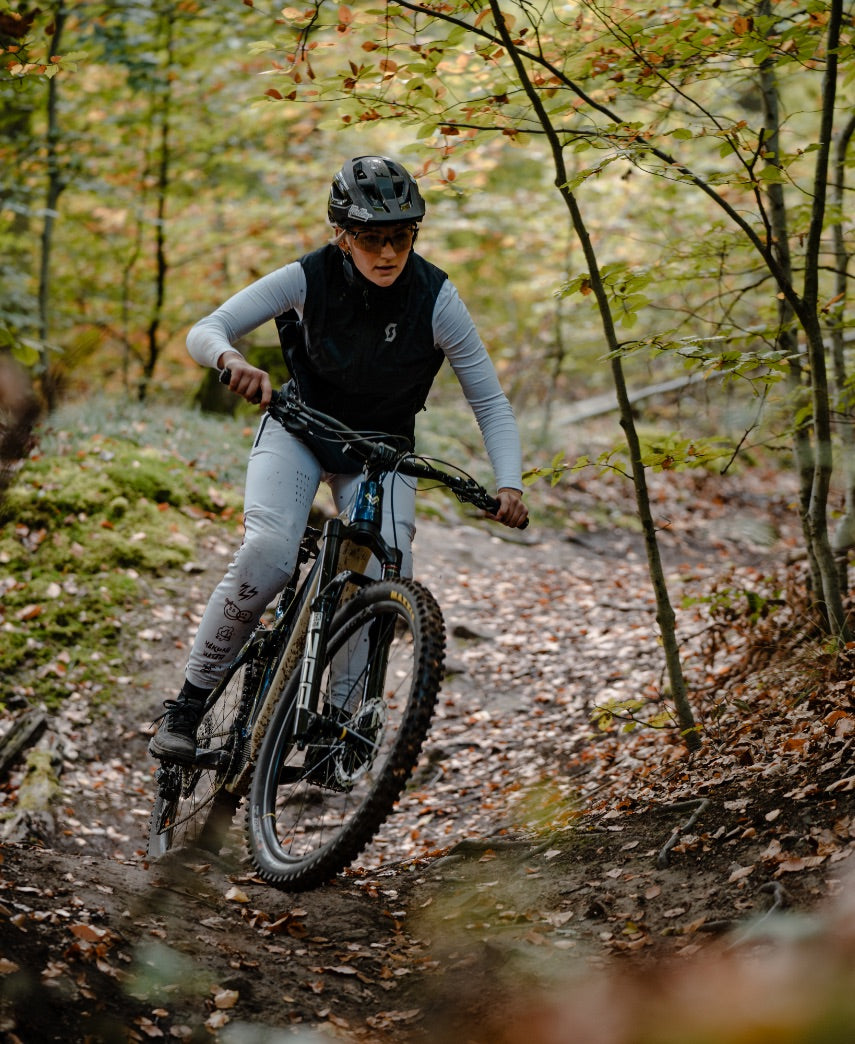Mountain bike
Feel nature. Conquer peaks.

Feel nature. Conquer peaks.
Mountain bikes
The Toronto Fully MTB has a frame made entirely of carbon, which was created for sporty off-road riding. It not only impresses with its good desig...
View full detailsThe Vancouver Hardtail MTB has a frame made entirely of carbon, which was created for sporty off-road riding. It not only impresses with its good ...
View full details
Mountain bikes are robust bicycles that are specially designed for use on unpaved paths and difficult terrain. They are characterized by their sturdy frames, wide tires with a coarse profile and high-quality suspension that absorbs shocks and vibrations on uneven surfaces. The construction and the materials used are designed for maximum resilience and durability.
The first mountain bikes were developed in California in the 1970s and have undergone impressive development since then. Today there are a variety of different models and types that are tailored to the specific requirements and preferences of mountain bikers. From lightweight cross-country bikes to robust downhill bikes and versatile all-mountain bikes, there is a bike to suit every taste and every purpose.

There are a few important aspects to consider when buying a mountain bike. First of all, it is important to choose the right model for the intended purpose. Cross-country bikes, for example, are designed for fast rides on well-maintained paths and easy trails, while downhill bikes are designed for steep and technically demanding descents. All-mountain bikes are a good choice for anyone looking for a versatile bike that performs well both uphill and downhill.
In addition to the model, the size of the bike also plays a decisive role. It should be optimally tailored to the rider's height and proportions in order to ensure a high level of riding comfort and optimal control over the bike. The bike's equipment, such as the quality of the brakes, gears and suspension, should also correspond to personal requirements and the intended purpose. High-quality components contribute significantly to the bike's performance and longevity.
Regular care and maintenance is essential to ensure the longevity and performance of a mountain bike. The bike should be cleaned after every ride to remove dirt and moisture that can attack the materials and impair the function of the components. It is particularly important to care for the chain, which should be cleaned and oiled regularly to ensure smooth running and a long service life.
In addition to regular cleaning, regular maintenance should also be carried out. This includes checking and, if necessary, replacing wearing parts such as brake pads and tires, checking and adjusting the gears and brakes, and maintaining the suspension.
E-mountain bikes
MYVELO Aspen E-Fully MTB – Dein Abenteuer beginnt hier! 🚵♂️⚡ Das MYVELO Aspen E-Fully MTB ist dein ultimativer Begleiter für anspruchsvolle Trails...
View full detailsEverest Equipped E-SUV is the best way to see the world on two wheels. With the Shimano EP6 motor, it is the most powerful E-SUV. The large 720 Wh...
View full detailsMYVELO E MTB Palermo Equipped Shimano Steps EP8 More trail fun with comfort is the top priority for the MYVELO E MTB Palermo Equip...
View full detailsMYVELO E MTB Himalaya Equipped Shimano Steps EP8 Bikepacking for several days, an overnighter or just a quick trip to the trail - ...
View full detailsThe most frequently asked questions and answers

Als Rennradfahrer möchte man möglichst ständig besser werden: schneller, ausdauernder und effizienter. Doch was, wenn der Schlüssel zu diesen Zielen nicht nur auf zwei Rädern liegt? Rudern, oft unterschätzt, bietet eine ideale Ergänzung zum Radtraining. Es trainiert nicht nur den ganzen Körper, sondern verbessert auch die Ausdauer, Kraft und Stabilität – entscheidende Faktoren für jeden Radsportler.

Nach einer intensiven Rennrad-Einheit ist die richtige Regeneration entscheidend, um Leistung zu verbessern, Verletzungen zu vermeiden und langfristig Fortschritte zu erzielen. Doch wie sieht eine effektive Erholung aus? Hier bekommst Du die besten Tipps zur optimalen Regeneration nach dem Rennradtraining.

Erfahre, wie Radsport-Ligen aufgebaut sind und weitere Infos zur Organisation im Profi-Radsport!